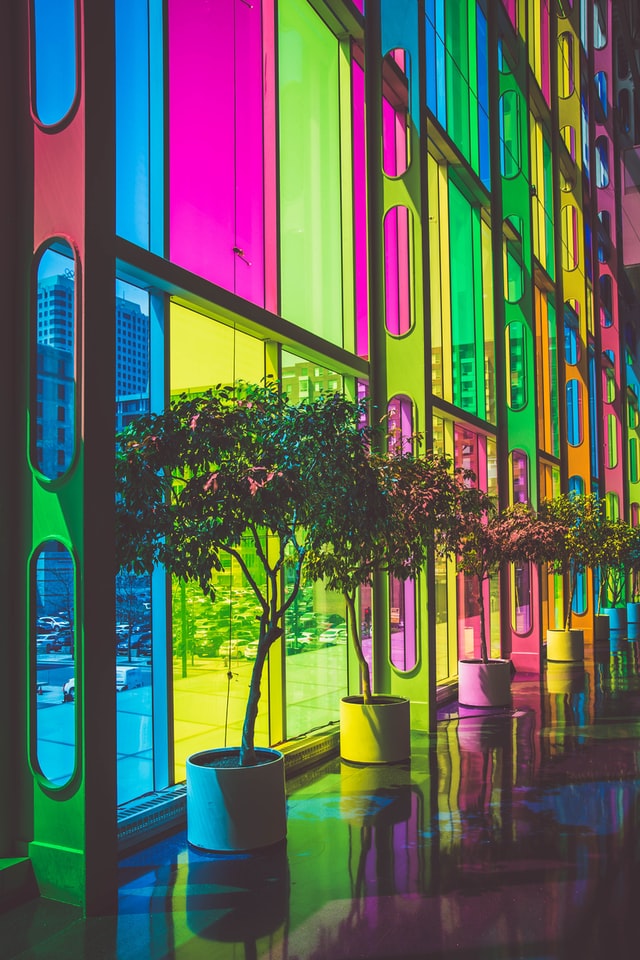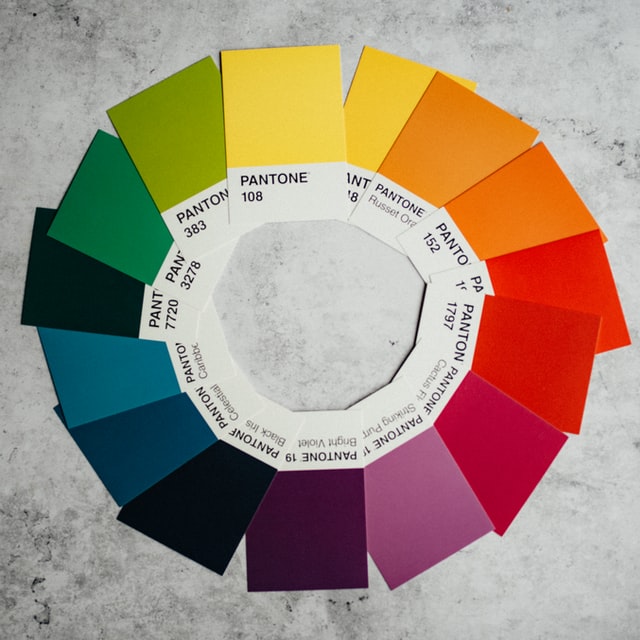The background that the viewers see is important for the speaker’s image. In addition to issues such as good lighting or technical equipment, it is an essential element of the presentation. A study in which the speaker presented himself in three different backgrounds: the room in which he is at the moment of presentation, a single-color background or a virtual background, showed interesting correlations. The background showing the current location was the most preferred.
Background impact on the speaker's perception in public speaking
In the context of building an image as an authentic, trustworthy and expert person, we should choose this background. If we want to achieve the effect of innovation, a uniform background will be better for this purpose. The virtual, “artificial” background is the worst in the list. Recipients are eager to watch shelves with books and pictures, photos, or diplomas framed. Men prefer to see books more than women, in turn, women prefer pictures (Zandan and Lynch, 2020).
The background also influences the perception of products. In their research, Yoo and Kim (2014) presented the respondents with products on two different backgrounds, uniform and presenting the product in a commercial context. The results show that placing a product on a commercial background is more effective in generating the desired image than a plain background.
Wu and Li (2021), in their experiment with the use of eye-trackers, proved that a uniform background causes the product presented on them are noticed faster. However, the patchy background with a concrete texture elicited a more favorable attitude and influenced the formation of opinions.

Virtual background- video calls
During training or meetings, the background can be used as an ice-breaker or used to integrate the team (Gross, 2020). In a formal situation, during an official meeting, the Star Wars or beach scene may be inadequate, but during a less formal meeting, it may help to integrate people who are locked at home by a pandemic and cannot meet in the office. It gives a social aspect and supports building interpersonal relationships.
The virtual background is a relatively new functionality. Some companies’ case was a response to the need for remote work in the home space, which was not always conducive to video conferences. Using artificial intelligence, it detects hair, face and body.
Colors- what is the impact, and how do they influence us?

Influence and meaning of colors: yellow, orange, blue, red, green
In addition to the background, colors are an important tool of persuasion. Surrounding ourselves with specific colors can affect our cognitive processes (Elliot and Maier, 2014).
Each of us can subjectively perceive individual colors. Colors can have different meanings, symbolisms, and messages depending on the cultural and geographical context (Płotka and Litwin, 2010). In the Hupek and colleagues (1997) study, participants indicated which colors they associate with anger, jealousy, and fear. Also, other colors are culturally perceived in a specific way. Orange symbolizes kindness and goodness, it is associated with strength, vitality, creativity and enthusiasm (Kilijańska, 2017). Green is the color of hope, awakening life and peace. It can also influence our creativity (Lichtenfeld et al., 2012).
Kaya and EPPS (2004) investigated what emotions colors evoke in us. They found that green evokes the most positive emotions because it was associated with comfort and nature. The second favorite color was yellow, which was a metaphor for happiness for the respondents, and also energy related to the sun, e.g. in summer. In third place was blue, the color of peace, water, sky and relaxation. The color red was less positively associated because it was also associated with blood and evil, apart from being associated with love. Black in this comparison brings to mind mourning and tragic events and wealth and power.
Influence and meaning of color red

The color which grabs our attention the fastest is red (Hulten, Broweus and Dijk, 2011). In marketing, it is used to highlight promotions or special offers. It makes us make decisions faster and recall situations related to love and blood (Kilijańska, 2017). Accoring to Wohlfart (1986), looking at the red color can cause an increase in blood pressure and faster breathing. Red also increases women’s attractiveness in the eyes of men (Elliot and Niesta, 2008).
Influence and meaning of color black

In the experiment by Lakens and colleagues (2017), participants who did not know Chinese were asked to assess the correctness of the translation of the character. The character’s color was manipulated and presented in white and black versions.
When the sign is placed in white with a positive translation and in black in a negative, the respondents assessed the translations very correctly. Flowing conclusions, they are such that white and black meanings are universal and go beyond linguistic or geographical categorization (Baldauf, 1997). However, associations related to white are only positive when in contrast to black, and without it, they remain neutral. Thus, white is associated more positively because of the context (Löffler et al., 2017).
Influence and meaning of color blue

Blue can aid concentration in difficult tasks that require concentration on details (Xia et al., 2016). A Yu (2020) survey among Instagram users found that blue arouses user interest in images related to arts and culture. Blue has a universal overtone in various cultures and in most of them, it is mainly associated with calmness, stability, sadness and coldness (Amsteus et al., 2015).
Influence and meaning of color white

White is positively perceived as the color of peace, innocence, and hope, because it resembles snow, wedding, cotton. In turn, negative emotional reactions with white have been associated with boredom and loneliness (Kaya and EPPS, 2004). People automatically assume that people wearing white are more truthful and honest (Meier, Robinson, & Clore, 2004). A study of people from 23 different cultures showed that white was generally positive, while black was negatively rated (Adams & Osgood, 1973). Inhabitants of Asian countries – Japan, Indonesia and China were asked about their favorite color, and the most preferred one was white (Saito, 1996). In another comparison, white in European culture gave joy and was associated with cleanliness, while in China, it also meant mourning and death (Kopaliński, 2006).
In the context of cultural codes, giving someone white flowers means good intentions and innocent and sincere feelings. It can also be used in relation to the image in a business built with the background or clothing, as it symbolizes truth, wisdom, intuition and reason, which are a great advantage at work. White is also the visual basis for advertisements related to banks or cars associated with business vehicles (Tatarska, 2013).
The white color can also increase the satisfaction with the food you eat compared to other colors. In a study in which participants tested raspberry mousse from a white and a black plate, they rated it better in terms of the intensity of taste and sweetness when consuming it from a white dish (Piqueras-Fiszman et al., 2012). White is one of the most frequently chosen colors for painting walls in apartments and in architecture (Ludwin, 2008). It may result from the association of this color with calmness and security, as well as hope and a certain kind of universality with interior design because its use gives the illusion of a larger space (Popek, 2001).
Summary
The cited research shows that background and colors play a large role in creating opinions. By using the right frames, colors and backgrounds, we can influence on the perception of us by the public. Colors can influence our cognitive processes and cognition in general. They can be used to induce desired behaviors or associations and influence the recipient’s emotions. The backgrounds used during a video conference determine the speaker’s perception. Equally important is the perspective of the camera positioning.

Bibliography:
- Adams, F. M. i Osgood, C. E. (1973). A cross-cultural study of the affective meanings of color. Journal of Cross-Cultural Psychology, 4, s. 135–156.
- Amsteus, M., Al-Shaaban, S., Wallin, E. i Sjöqvist, S. (2015). Colors in marketing: A study of color associations and context (in) dependence. International Journal of Business and Social Science, 6(3), s. 32-45.
- Baldauf, C. (1997). Metapher und Kognition. Grundlagen einer neuen Theorie der Alltagsmetapher.
- Elliot, A.J. i Maier, M.A. (2014). Color Psychology: Effects of Perceiving Color on Psychological Functioning in Humans. Annual Review of Psychology, 65(1), s. 95-120.
- Elliot, A. J. i Niesta, D. (2008). Romantic red: Red enhances men’s attraction to women. Journal of Personality and Social Psychology, 95, s. 1150-1164.
- Gross, M. (2020). Your Zoom Background Can Do More Than Just Entertain:bloomberg.com/news/articles/2020-03-25/using-zoom-backgrounds-to-improve-morale-and-increase-business
- Hulten, B. i Broweus, N. (2011). Marketing sensoryczny. Wydawnictwo PWE.
- Hupka, R. B., Zaleski, Z., Otto, J., Reidl, L. i Tarabrina, N. V. (1997). The colours of anger, envy, fear, and jealousy: A cross-cultural study. Journal of Cross-Cultural Psychology, 28.
- Kaya, N. i EPPS, H.H. (2004). Color-emotions associations: past experience and personal preference. Publikacja na AIC 2004 Color and Paints, Interim Meeting of the International Color Association, s. 32-33.
- Kilijańska, B. (2017). Wpływ koloru przekazu na jego percepcję. Dziennikarstwo i Media, 8, s. 171-182.
- Kopaliński, W. (2006). Słownik symboli. Oficyna Wydawnicza Rytm.
- Lakens, D., Semin, G.R. i Foroni, F. (2012). But for the bad, there would not be good: grounding valence in brightnessthrough shared relational structures. Journal of Experimental Psychology General, 141(3), s. 584-594.
- Lichtenfeld, S., Elliot, A. J., Maier, M. A. i Pekrun, R. (2012). Fertile green: Green facilitates creative performance. Personality and Social Psychology Bulletin, 38, s. 784-797.
- Ludwin K., (2008). Barwy architektury – O kolorze w architekturze dyskusję czas zacząć. Czasopismo Techniczne. Architektura, 105(6), s. 400-404.
- Meier, B. P., Robinson, M. D. i Clore, G. L. (2004). Why good guys wear white. Psychological Science, 15, s. 82-87.
- Piqueras-Fiszman, B., Alcaide, J., Roura, E. i Spence, C. (2012). Is it the plate or is it the food? Assessing the influence of the color (black or white) and shape of the plate on the perception of the food placed on it. Food Quality and Preference, 24(1), s. 205-208.
- Płotka, M. i Litwin, W. (2010). Psychologia koloru w odniesieniu do systemów informatycznych. Publikacja z Konferencji Interfejs użytkownika – Kansei w praktyce, Gdynia.
- Popek S. (2001). Barwy i psychika. Wydawnictwo UMCS.
- Saito, M. (1996). A comparative study of color preferences in Japan, China and Indonesia, with emphasis on the preference for white. Perceptual and Motor Skills, 83, s. 115-128.
- Tatarska, J. (2013). Rola koloru w reklamie prasowej. Reklama wizualna, s. 24-58.
- Wu, R. i Li, Y. (2021). The effect of human model image backgrounds on consumer responses: empirical evidence from a Chinese apparel e-retailer”. Asia Pacific Journal of Marketing and Logistics.
- Xia, T., Song, L., Wang, T. T., Tan, L. i Mo, L. (2016). Exploring the effect of red and blue on cognitive task performances. Frontiers in Psychology, 7, s. 784.
- Yoo, J. i Kim, M. (2014). The effects of online product presentation on consumer responses: A mental imagery perspective. Journal of Business Research, 67(11), s. 2464-2472.
- Yu, Ch.E., Xie, S.Y. i Wen, J. (2020). Coloring the destination: The role of color psychology on Instagram. Tourism Management, 80.
- Zandan, N. i Lynch, H. (2020). Dress for the (Remote) Job You Want. Harvard Business Review:hbr.org/2020/06/dress-for-the-remote-job-you-want

Hi. Welcome to my blog 🙂 I’m a psychologist and public speaking trainer. In 2021 I was chosen as one of the top 11 public-speaking coaches worldwide 2021, according to the Coach Foundation ranking. I work as a TEDx coach and Head of Speakers at TEDxZurich. I also help, among others, lawyers, vocalists, actors, lecturers and business people in preparation for their speeches in front of hundreds of people in the audience, as well as in conducting small meetings or presentations. For many years I worked on controlling the stage fright that kept me awake at night. I was singing and dancing in a Cuban musical. I have always wondered how to manage the internal critic, not to worry about the opinion of others, and how to build a real sense of confidence on stage. Now I know the answer.
Recently, I have given countless interviews, which made me aware of the importance of confidence in front of the camera. Having been involved in music since the age of 10, I know how stressful it can be to present to a wider audience. By combining my business and music experience, I can guide you through the process of changing direction towards your dreams. Based on my vast stage experience, I have gained the ability to provide adequate tools and methods of coaching that will support your development.





